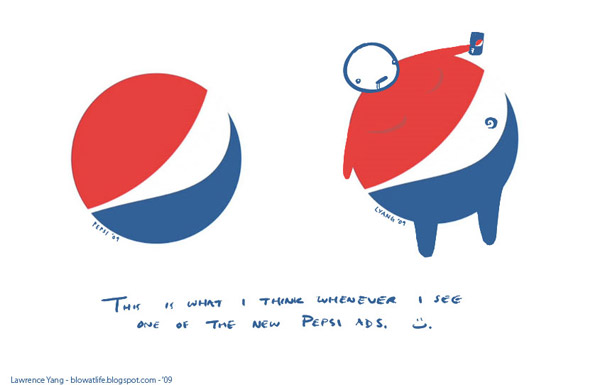BRAND LOYALTY
Brand Loyalty; is a consumers commitment to repurchase or continue to use a specific brand they like.
Brand loyalty is one of the most converted assets known to mankind. Very few brands achieve it, the likelihood that your brand will achieve a high level of loyalty is slim to none. Not that your brand doesn't deserve consumer loyalty, the numbers are against you.!
So now that you want some how do you build customer loyalty to your brand?
"a clearly defined value proposition relevant to your target audiences. This message is what your brand promises to deliver that its competitors do not."
I chose Vegemite, it is consistent with everything i remember about toast for breakfast, fresh bread as a little girl and although to some it taste yuk! i love it!!!
Also i like "nokia" phones, i personally are used to the way they work.
http://www.smithandjones.com/content489
http://eprints.qut.edu.au/14533/
http://www.gizmodo.com.au/2010/06/fanboyism-and-brand-loyalty/
http://blog.abn.org.au/grow-your-business/tip-no-3-brand-loyalty-the-pot-of-gold
Tip No. 2: Out-Step the Competition
, Hayman Strategy
I spent today with a young woman who is building a new Service business from scratch. It is a unique idea and while she has already successfully built the first platform for the business, she has, like all passionate and extraordinary entrepreneurs, phase two evolving for launch.
She was looking for advice about how to best hit the market hardest and fastest and get a “step up” ahead of the reliable list of competitors who will be quick in their attempts to follow.
The ensuing discussion outlined a few pointers that are worth sharing especially for those working with a service brand or business. The first part means thinking about your business from their point of view.

1.
Develop a list of criteria that defines the most “valuable” objectives that your offer can meet. Think about things such as:
- Does it meet a strategic acquisition need?
- Does it effectively build loyalty of existing customers?
- Does it provide your customers a means for better reaching their end users?
- Is it merely an awareness building tool?
2.
Match this criteria list to a well-thought out list of potential customers. Consider:
- What might they be looking for – their goals?
- If they are not the end user, then who they are targeting as their end users?
- What other products and services do they utilize, and how is your offer different/better in meeting their goals?
- Is there an appropriate way to hit the market geographically and tie up crucial market sectors quickly? Which customers meet this definition?
- Are you working with the “thought leaders” or “big guys”? Those that will make your proposition the most sticky? Will it entice other, smaller businesses to join your brand and reject those that enter the market 2nd or 3rd?
3.
Consider age-defining characteristics as well as specific user traits and behaviours for your customers.
4.
Remember to ensure you can actually deliver against any expectations these customers will have.
5.
Use the best resources at your disposal to quickly blanket these customers and “sell” them on your business, illustrating to them how it meets their objectives.
6.
You may need a specialized sales resource or a team of trained professionals but TRAINING is key. Knowing your service is obvious but knowing and understanding the customers’ markets and needs is crucial and this is what will set your brand apart. The relationship has to built on trust and understanding, this is key so make this step really count.
Like all good consumer marketing strategies, it comes back, yet again to the customer and defining your business through their eyes first!
If you have done all the thinking up front, and used relevant and compelling criteria to define the ‘best fit’ customers, you have the first step. When you then approach these customers with knowledge and expertise and empathy you will most likely be able to elicit their commitment to your business ahead of the pack.

 Leon Bakst, one of the most important designers for the Ballet Russe, was born in Grodno on May 10, 1866. Aiding Diaghilev with the formation of Ballet Russe, Bakst assumed the role of artistic director. His sets and costumes brought him wide recognition. He is most noted for the sets and costumes for Scheherazade (1910), Firebird (1910), Le Spectre de la Rose (1911). He designed for Ballet Russe from 1909-1921.
Leon Bakst, one of the most important designers for the Ballet Russe, was born in Grodno on May 10, 1866. Aiding Diaghilev with the formation of Ballet Russe, Bakst assumed the role of artistic director. His sets and costumes brought him wide recognition. He is most noted for the sets and costumes for Scheherazade (1910), Firebird (1910), Le Spectre de la Rose (1911). He designed for Ballet Russe from 1909-1921.










































 Apple II was successful mainly because it had colored graphics. Great and simple design, has always been the USP (Unique Selling Proposition) for Apple, and their logo is no exception. When Apple was started, the logo was a complicated picture of Isaac Newton sitting under a tree. This had been designed by Jobs and Wayne, with the inscription: “Newton … A Mind Forever Voyaging Through Strange Seas of Thought … Alone.” Frankly, I don’t think it was just a coincidence that Apple had slow sales during this period.
Apple II was successful mainly because it had colored graphics. Great and simple design, has always been the USP (Unique Selling Proposition) for Apple, and their logo is no exception. When Apple was started, the logo was a complicated picture of Isaac Newton sitting under a tree. This had been designed by Jobs and Wayne, with the inscription: “Newton … A Mind Forever Voyaging Through Strange Seas of Thought … Alone.” Frankly, I don’t think it was just a coincidence that Apple had slow sales during this period.
 A
A